- Home
- Jean M. Auel
The Mammoth Hunters
The Mammoth Hunters Read online
PRAISE FOR THE BESTSELLING CLASSIC
The Mammoth Hunters
“Storytelling in the grand tradition … From the violent panorama of spring on the steppes to musicians jamming on a mammoth-bone marimba, Auel’s books are a stunning example of world building. They join the short list of books, like James Clavell’s Shogun and Frank Herbert’s Dune, that depict exotic societies so vividly that readers almost regard them as ‘survival manuals.’ The Mammoth Hunters weaves such a spell that readers may even suffer momentary culture shock when they are whisked forward twenty-five thousand years from a Mamutoi longhouse into their own living rooms.”
—Vogue
“The Mammoth Hunters is successful because it presents prehistoric people as human beings.… It is genuinely exciting to follow Ayla on her odyssey through Ice Age lands. If hunting a herd of mammoths at the base of a mile-high wall of ice doesn’t provoke your imagination, I don’t know what will.”
—The Detroit News
“Auel is a prodigious researcher.… Jondalar’s spears and flints are as authentic as Ranec’s skilled carvings. The ongoing narrative of this book, as with the others, is lively and interesting, enhanced greatly by the vividly colored backdrop of early humanity.”
—The Washington Post Book World
“Jean Auel has established herself as one of our premier storytellers.… [The Mammoth Hunters] is a compelling, pulse-quickening tale of adventure, love, and survival during a period of human history that has seldom been drawn upon by other fiction writers.… My thanks to Jean Auel for a pleasurable, refreshing journey into the past.”
—Chicago Tribune
This eBook version of THE MAMMOTH HUNTERS contains bonus content not found in the printed version.
A Sneak Preview from THE LAND OF PAINTED CAVES
Read an exciting preview from Jean M. Auel’s The Land of Painted Caves, on sale in hardcover in Spring 2011.
EARTH’S CHILDREN® Series Sampler
Read excerpts from each of the novels in the Earth’s Children® series.
Q&A with Jean M. Auel
In this special Q&A, Jean M. Auel discusses her bestselling Earth’s Children® series.
This edition contains the complete text
of the original hardcover edition.
NOT ONE WORD HAS BEEN OMITTED.
THE MAMMOTH HUNTERS
A Bantam Book / published by arrangement with
Crown Publishers
PUBLISHING HISTORY
Crown edition published December 1985
Bantam edition / December 1986
Bantam reissue / November 1991
Bantam reissue / April 2002
EARTH’S CHILDREN is a trademark of Jean M. Auel
All rights reserved.
Copyright © 1985 by Jean M. Auel
Excerpt from The Land of Painted Caves copyright 2010 by Jean M. Auel.
Library of Congress Catalog Card Number: 85-17503. No part of this book may be reproduced or transmitted in any form or by any means, electronic or mechanical, including photocopying, recording, or by any information storage and retrieval system, without permission in writing from the publisher.
For information address: Crown Publishers, Inc., New York, NY.
eISBN: 978-0-307-76763-9
This book contains an excerpt from the forthcoming book The Land of Painted Caves. This excerpt has been set for this edition only and may not reflect the final content of the forthcoming edition.
Bantam Books are published by Bantam Books, a division of Random House, Inc. Its trademark, consisting of the words “Bantam Books” and the portrayal of a rooster, is Registered in U.S. Patent and Trademark Office and in other countries. Marca Registrada. Bantam Books, 1540 Broadway, New York, New York 10036.
v3.1_r2
For MARSHALL,
who has become a man to be proud of,
and for BEVERLY,
who helped,
and for CHRISTOPHER, BRIAN, and MELLISSA,
with Love.
Novels by Jean M. Auel
THE CLAN OF THE CAVE BEAR
THE VALLEY OF HORSES
THE MAMMOTH HUNTERS
THE PLAINS OF PASSAGE
THE SHELTERS OF STONE
And the latest novel in the Earth’s Children® series
THE LAND OF PAINTED CAVES
Acknowledgments
I could never have told this story without the books and materials of the specialists who have worked at the sites and have collected the artifacts of our prehistoric ancestors, and they have my deepest gratitude. To several people, I owe special thanks. I have enjoyed the discussions, the correspondence, and the papers, full of not only facts but also ideas and theories. I must make it clear, however, that those who provided me with information and offered help are in no way responsible for the viewpoints or ideas expressed in this story. This is a work of fiction, a story of my imagination. The characters, concepts, and cultural descriptions are my own.
Sincere thanks first to David Abrams, professor of anthropology and tour director extraordinaire, and to Diane Kelly, student of anthropology, and master of human relations, who planned, arranged, and accompanied us on the private research trip to sites and museums in France, Austria, Czechoslovakia, and the Soviet Union.
My thanks and great appreciation to Dr. Jan Jelinek, Director, Anthropos Institute, Brno, Czechoslovakia, for taking the time to show me many of the actual artifacts from Eastern Europe that appear in his book, The Pictorial Encyclopedia of the Evolution of Man (The Hamlyn Publishing Group, Ltd., London).
I am grateful to Dr. Lee Porter of Washington State University, and to whatever fates put her, with her American accent, in our hotel in Kiev. She was there studying fossil mammoth bones, and meeting with the very person we had been desperately trying to see. She cut through all the red tape, and arranged the meeting.
I am indebted to Dr. J. Lawrence Angel, Curator of Physical Anthropology at Smithsonian Institution, for many things: for some positive and encouraging words about my books; for giving me a “backstage” look and an explanation of some of the differences and similarities between Neanderthal and modern human bones, and particularly for suggesting people who could give me further information and assistance.
I deeply appreciate the special efforts of Dr. Ninel Kornietz, Russian expert on the Ukrainian Upper Paleolithic, who was gracious and kind, even on short notice. With her we saw artifacts in two museums, and she presented me with the one book I had been searching for on the musical instruments made out of mammoth bones by Ice Age people, and a recording of their sounds. The book was in Russian, and I owe deep thanks to Dr. Gloria y’Edynak, formerly an assistant of Dr. Angel, who knows Russian, including the technical terminology of paleoanthropology, for arranging for a translator for this book, and especially for checking it over and filling in the correct technical words. Thanks are also due for her translation of the Ukrainian language articles comparing modern weaving patterns in the Ukraine with designs carved into Ice Age artifacts.
To Dorothy Yacek-Matulis I owe great appreciation for a good, readable, workable translation of the Russian mammoth bone music book. The material has proved invaluable.
Thanks are also in order to Dr. Richard Klein, author of Ice-Age Hunters of the Ukraine (University of Chicago Press), who kindly provided additional papers and information about the ancient people of the region.
I am particularly grateful to Alexander Marshack, research fellow of the Peabody Museum of Archaeology and Ethnology, Harvard University, and author of The Roots of Civilization (McGraw-Hill Book Co.), for copies of the results of his microscopic studies of Ukrainian Upper Paleolithic art and artifacts, which appeared in Current Anthropology, material from his as yet un
published book on the Eastern European Ice Age people.
My sincerest appreciation to Dr. Olga Soffer, Department of Anthropology, University of Wisconsin, and probably the leading expert in the United States today on the Ice Age populations of Russia, for the long, interesting, and useful conversation in the lobby of the Hilton, and her material, “Patterns of Intensification as Seen from the Upper Paleolithic Central Russian Plain,” from Prehistoric Hunter-Gatherers: The Emergence of Cultural Complexity, T. Douglas Price and James A. Brown, editors (Academic Press).
Gratitude in great measure goes to Dr. Paul C. Paquet, co-editor, Wolves of the World (Noyes Publications), for interrupting his vacation to return my call, and for the long discussion on wolves and their possible domestication.
Thanks again to Jim Riggs, anthropologist and instructor of “Aboriginal Life Skills” classes. I continue to use the information I learned from him.
I am indebted to three people who read a fat manuscript on short notice and offered helpful comments from a reader’s point of view: Karen Auel, who read a first draft and got caught up in it, and let me know I had a story; Doreen Gandy, poet and teacher, who squeezed the reading into the end of her school year without any loss of her usual insights; and Cathy Humble, who managed, again, to make astute observations.
Special thanks to Betty Prashker, my editor, whose perceptions I value, and whose commentary and suggestions were right on target.
Words are insufficient to thank Jean Naggar, friend, confidante, and literary agent beyond compare, who has continued to exceed my wildest expectations.
Sincere appreciation to the production and art departments of Crown Publishers, whose care and expert workmanship consistently turn out beautiful and well-made books.
I am grateful to Judith Wilkes, my secretary and office assistant, whose intelligence I have come to depend upon, and who eases the pressure of my increased volume of correspondence, so I can write.
And to Rav Auel.…
Contents
Cover
Title Page
Copyright
Dedication
Novels by Jean M. Auel
Acknowledgments Maps
Lion Camp Earthlodge
Chapter 1
Chapter 2
Chapter 3
Chapter 4
Chapter 5
Chapter 6
Chapter 7
Chapter 8
Chapter 9
Chapter 10
Chapter 11
Chapter 12
Chapter 13
Chapter 14
Chapter 15
Chapter 16
Chapter 17
Chapter 18
Chapter 19
Chapter 20
Chapter 21
Chapter 22
Chapter 23
Chapter 24
Chapter 25
Chapter 26
Chapter 27
Chapter 28
Chapter 29
Chapter 30
Chapter 31
Chapter 32
Chapter 33
Chapter 34
Chapter 35
Chapter 36
Chapter 37
Excerpt from The Land of Painted Caves
Earth’s Children Series Sampler
An Interview with Jean M. Auel
About the Author
Lion Camp Earthlodge
ENTRY area—storage of fuel, implements, outer clothes
FIRST hearth—cooking hearth and space for gathering
SECOND—Lion Hearth
Talut—headman
Nezzie
Danug
Latie
Rugie
Rydag
THIRD— Fox Hearth
Wymez
Ranec
FOURTH—Mammoth Hearth—space for ceremonies, gathering, projects, visitors
Mamut—shaman
Ayla
Jondalar
FIFTH— Reindeer Hearth
Manuv
Tronie
Tornec
Nuvie
Hartal
SIXTH— Crane Hearth
Crozie
Fralie
Frebec
Crisavec
Tasher
(Bectie)
SEVENTH—Aurochs Hearth
Tulie—headwoman
Barzec
Deegie
Druwez
Brinan
Tusie
(Tarneg)
1
Trembling with fear, Ayla clung to the tall man beside her as she watched the strangers approach. Jondalar put his arm around her protectively, but she still shook.
He’s so big! Ayla thought, gaping at the man in the lead, the one with hair and beard the color of fire. She had never seen anyone so big. He even made Jondalar seem small, though the man who held her towered over most men. The red-haired man coming toward them was more than tall; he was huge, a bear of a man. His neck bulged, his chest could have filled out two ordinary men, his massive biceps matched most men’s thighs.
Ayla glanced at Jondalar and saw no fear in his face, but his smile was guarded. They were strangers, and in his long travels he had learned to be wary of strangers.
“I don’t recall seeing you before,” the big man said without preamble. “What Camp are you from?” He did not speak Jondalar’s language, Ayla noticed, but one of the others he had been teaching her.
“No Camp,” Jondalar said. “We are not Mamutoi.” He unclasped Ayla and took a step forward, holding out both hands, palms upward showing he was hiding nothing, in the greeting of friendliness. “I am Jondalar of the Zelandonii.”
The hands were not accepted. “Zelandonii? That’s a strange … Wait, weren’t there two foreign men staying with those river people that live to the west? It seems to me the name I heard was something like that.”
“Yes, my brother and I lived with them,” Jondalar conceded.
The man with the flaming beard looked thoughtful for a while, then, unexpectedly, he lunged for Jondalar and grabbed the tall blond man in a bone-crunching bear hug.
“Then we are related!” he boomed, a broad smile warming his face. “Tholie is the daughter of my cousin!”
Jondalar’s smile returned, a little shaken. “Tholie! A Mamutoi woman named Tholie was my brother’s cross-mate! She taught me your language.”
“Of course! I told you. We are related.” He grasped the hands that Jondalar had extended in friendship, which he had rejected before. “I am Talut, headman of the Lion Camp.”
Everyone was smiling, Ayla noticed. Talut beamed a grin at her, then eyed her appreciatively. “I see you are not traveling with a brother now,” he said to Jondalar.
Jondalar put his arm around her again, and she noticed a fleeting look of pain wrinkle his brow before he spoke. “This is Ayla.”
“It’s an unusual name. Is she of the river people?”
Jondalar was taken aback by the abruptness of his questioning, then, remembering Tholie, he smiled inwardly. The short, stocky woman he knew bore little resemblance to the great hulk of a man standing there on the riverbank, but they were chipped from the same flint. They both had the same direct approach, the same unself-conscious—almost ingenuous—candor. He didn’t know what to say. Ayla was not going to be easy to explain.
“No, she has been living in a valley some days’ journey from here.”
Talut looked puzzled. “I have not heard of a woman with her name living nearby. Are you sure she is Mamutoi?”
“I’m sure she is not.”
“Then who are her people? Only we who hunt mammoth live in this region.”
“I have no people,” Ayla said, lifting her chin with a touch of defiance.
Talut appraised her shrewdly. She had spoken the words in his language, but the quality of her voice and the way she made the sounds were … strange. Not unpleasant, but unusual. Jondalar spoke with the accent of a language foreign to him; the difference in
the way she spoke went beyond accent. Talut’s interest was piqued.
“Well, this is no place to talk,” Talut said, finally. “Nezzie will give me the Mother’s own wrath if I don’t invite you to visit. Visitors always bring a little excitement, and we haven’t had visitors for a while. The Lion Camp would welcome you, Jondalar of the Zelandonii, and Ayla of No People. Will you come?”
“What do you say, Ayla? Would you like to visit?” Jondalar asked, switching to Zelandonii so she could answer truthfully without fear of offending. “Isn’t it time you met your own kind? Isn’t that what Iza told you to do? Find your own people?” He didn’t want to seem too eager, but after so long without anyone else to talk to, he was anxious to visit.
“I don’t know,” she said, frowning with indecision. “What will they think of me? He wanted to know who my people were. I don’t have any people any more. What if they don’t like me?”
“They will like you, Ayla, believe me. I know they will. Talut invited you, didn’t he? It didn’t matter to him that you have no people. Besides, you’ll never know if they will accept you—or if you will like them—if you don’t give them a chance. These are the kind of people you should have grown up with, you know. We don’t have to stay long. We can leave any time.”
“We can leave any time?”
“Of course.”
Ayla looked down at the ground, trying to make up her mind. She wanted to go with them; she felt an attraction to these people, and a curiosity to know more about them, but she felt a tight knot of fear in her stomach. She glanced up and saw two shaggy steppe horses grazing on the rich grass of the plain near the river, and her fear intensified.
“What about Whinney! What will we do with her? What if they want to kill her? I can’t let anyone hurt Whinney!”
Jondalar hadn’t thought about Whinney. What would they think? he wondered. “I don’t know what they will do, Ayla, but I don’t think they would kill her if we tell them she is special and not meant for food.” He remembered his surprise, and his initial feeling of awe over Ayla’s relationship with the horse. It would be interesting to see their reaction. “I have an idea.”

 The Clan of the Cave Bear
The Clan of the Cave Bear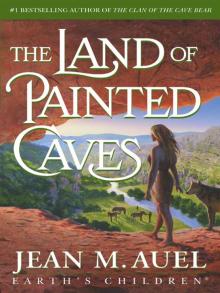 The Land of Painted Caves
The Land of Painted Caves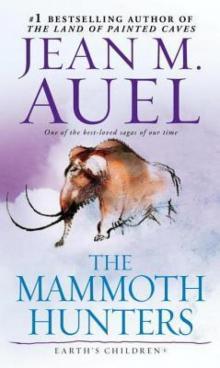 The Mammoth Hunters
The Mammoth Hunters The Earth's Children Series 6-Book Bundle
The Earth's Children Series 6-Book Bundle The Valley of Horses
The Valley of Horses The Shelters of Stone
The Shelters of Stone The Clan of the Cave Bear ec-1
The Clan of the Cave Bear ec-1 THE PLAINS OF PASSAGE ec-4
THE PLAINS OF PASSAGE ec-4 The Mammoth Hunters ec-3
The Mammoth Hunters ec-3 THE SHELTERS OF STONE ec-5
THE SHELTERS OF STONE ec-5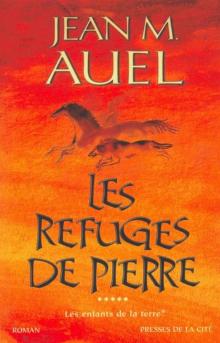 Les refuges de pierre
Les refuges de pierre![Earth's Children [02] The Valley of Horses Read online](http://i1.bookreadfree.com/i1/03/30/earths_children_02_the_valley_of_horses_preview.jpg) Earth's Children [02] The Valley of Horses
Earth's Children [02] The Valley of Horses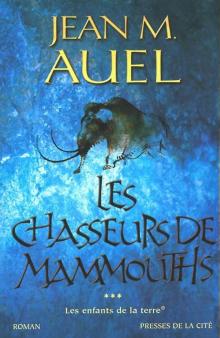 Les chasseurs de mammouths
Les chasseurs de mammouths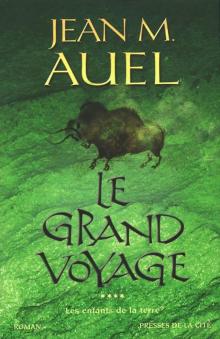 LE GRAND VOYAGE
LE GRAND VOYAGE The Land of Painted Caves ec-6
The Land of Painted Caves ec-6 The Valley Of Horses ec-2
The Valley Of Horses ec-2 La Vallée des chevaux
La Vallée des chevaux